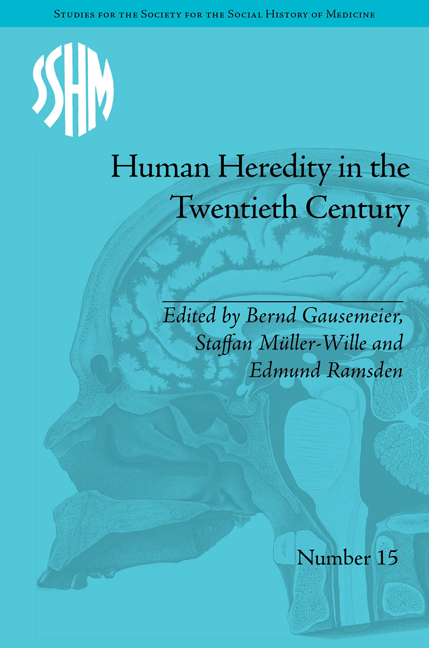Book contents
- Frontmatter
- Contents
- Acknowledgements
- List of Contributors
- List of Figures and Tables
- Introduction: Human Heredity in the Twentieth Century
- Part I Constructing Surveys of Heredity
- Part II Blood and Populations
- Part III Human Heredity in the Laboratory
- Part IV Understanding and Managing Disease
- 11 The Disappearance of the Concept of Anticipation in the Post-War World
- 12 ‘The Most Hereditary of All Diseases’: Haemophilia and the Utility of Genetics for Haematology, 1930–70
- 13 How PKU Became a Genetic Disease
- Part V Reconstructing Discipline(s)
- Notes
- Index
13 - How PKU Became a Genetic Disease
from Part IV - Understanding and Managing Disease
- Frontmatter
- Contents
- Acknowledgements
- List of Contributors
- List of Figures and Tables
- Introduction: Human Heredity in the Twentieth Century
- Part I Constructing Surveys of Heredity
- Part II Blood and Populations
- Part III Human Heredity in the Laboratory
- Part IV Understanding and Managing Disease
- 11 The Disappearance of the Concept of Anticipation in the Post-War World
- 12 ‘The Most Hereditary of All Diseases’: Haemophilia and the Utility of Genetics for Haematology, 1930–70
- 13 How PKU Became a Genetic Disease
- Part V Reconstructing Discipline(s)
- Notes
- Index
Summary
The problematic of this essay may strike some readers as odd. After all, phenylketonuria, or PKU as it is more commonly known, was understood to be inherited nearly from the time it was first identified as a disease entity by Norwegian physician and biochemist Asbjørn Følling in 1934. Indeed, by the mid-1940s its autosomal recessive pattern of inheritance had been well confirmed. But the genetic aetiology of PKU was not always a defining characteristic of the disease. Whether an inherited condition is characterized as ‘genetic’, and, if so, the meaning and importance attached to that designation, is context dependent, varying with place, time, the specific features of the disease that are of greatest salience to patients, researchers and clinicians, and the general visibility of genetics in the culture. Thus Jean-Paul Gaudillière has shown that for Lionel Penrose and his British peers, the characterization of Down syndrome as a genetic (chromosomal) abnormality had very different implications than it did for Jérôme Lejeune and many of his compatriots in France. And writing of cystic fibrosis, Keith Wailoo and Stephen Pemberton explain that in the 1960s and 1970s, ‘neither families nor experts emphasized the “genetic” features of the disease. To be sure, they understood it to be a “hereditary” disorder, but this way of thinking did not capture what they saw as its fundamental biological underpinnings’.
- Type
- Chapter
- Information
- Human Heredity in the Twentieth Century , pp. 179 - 192Publisher: Pickering & ChattoFirst published in: 2014



